Introduction
Living with multiple addictions can feel like being caught in a complex web of dependencies. Many people ask, “Can you detox from multiple substances at once?” The answer is yes – with proper medical supervision and support, dual detox is possible and often necessary for complete recovery.
Dual detox refers to the process of safely withdrawing from two or more substances simultaneously under professional care. This approach has become increasingly relevant as polydrug use – the consumption of multiple substances – continues to rise.
Think of dual detox as untangling multiple knots at once. While it might seem overwhelming, attempting to address one addiction while leaving others untreated can complicate the recovery journey. Here’s why dual detox matters:
- It addresses all substance dependencies simultaneously
- It reduces the total time spent in detox
- It prevents the risk of substituting one addiction for another
- It allows for comprehensive healing of both body and mind
At Cedar Oaks Wellness, we understand that dealing with multiple addictions requires specialized care and attention. Our experience shows that successful dual detox is achievable when conducted in a controlled environment with proper medical oversight and personalized support.
The path to recovery from multiple substances might seem daunting, but you don’t have to walk it alone. Professional help makes dual detox not just possible, but safe and effective.
Understanding Multiple Addictions
Multiple addictions, also known as polydrug dependence, occur when an individual struggles with simultaneous dependencies on two or more substances. This complex condition presents unique challenges for both patients and healthcare providers, requiring specialized treatment approaches.
Common Substance Combinations in Multiple Addictions:
- Alcohol + prescription medications
- Opioids + benzodiazepines
- Cocaine + alcohol
- Heroin + methamphetamine
The prevalence of multiple addictions has risen significantly in recent years. Research indicates that approximately 50% of individuals with substance use disorders experience concurrent dependencies. This pattern often develops as users attempt to:
- Enhance the effects of their primary substance
- Counteract unwanted side effects
- Self-medicate underlying mental health conditions
- Manage withdrawal symptoms
Multiple addictions create a devastating impact on individuals’ lives, affecting:
Physical Health
- Increased risk of overdose
- Organ damage
- Compromised immune system
- Severe withdrawal complications
Mental Wellbeing
- Heightened anxiety and depression
- Memory problems
- Cognitive impairment
- Increased suicide risk
Social Consequences
- Strained relationships
- Job loss
- Financial difficulties
- Legal problems
Different substances pose unique challenges during detoxification. The combination of various drugs can create unpredictable withdrawal patterns and potentially dangerous interactions. For example, detoxing from alcohol while dependent on benzodiazepines requires careful medical monitoring due to the risk of severe withdrawal symptoms affecting the central nervous system.
The complexity of multiple addictions often necessitates a more intensive treatment approach compared to single-substance dependence. Each substance requires specific medical considerations, and the interaction between different drugs can complicate the withdrawal process.
The Detoxification Process for Multiple Substances
Detoxification is the crucial first step in overcoming substance dependencies. It involves safely removing toxic substances from the body while managing withdrawal symptoms. For individuals dealing with multiple addictions, the detox process requires careful planning and specific medical protocols.
Common Withdrawal Symptoms by Substance:
Alcohol Withdrawal
- Tremors and sweating
- Anxiety and irritability
- Elevated blood pressure
- Risk of seizures
- Potential delirium tremens
For those facing severe alcohol withdrawal symptoms, detoxification may be necessary. It is essential to seek help from a facility that specializes in this area, such as the Cedar Oaks Wellness Center, an Ohio-based rehab center known for its comprehensive support.
Opioid Withdrawal
- Muscle aches and cramps
- Nausea and vomiting
- Intense drug cravings
- Sleep disturbances
- Flu-like symptoms
Benzodiazepine Withdrawal
- Panic attacks
- Sensory hypersensitivity
- Memory problems
- Risk of psychosis
- Potential seizures
Factors Affecting Dual Detox Timeline
The timeline for dual detox varies based on several factors:
- Types of substances used
- Duration of substance use
- Individual health status
- Metabolism rate
- Presence of co-occurring disorders
During dual detox, the body goes through significant changes as it adapts to functioning without multiple substances. Medical professionals carefully plan the detox process, often starting with the substance that poses the highest medical risk. This methodical approach helps prevent dangerous complications and ensures optimal safety.
Duration of Detox Process
The physical detox process usually lasts 7-10 days, although psychological symptoms may persist longer. Medical teams use various medications to alleviate withdrawal symptoms:
- Anti-seizure medications
- Blood pressure stabilizers
- Anti-anxiety medications
- Sleep aids
- Pain management solutions
A successful detox program includes both physical and psychological support elements. While the body cleanses itself of substances, emotional support helps individuals cope with intense cravings and mood swings. This dual approach lays a strong foundation for the next stages of recovery.
For those specifically struggling with alcohol addiction, understanding the nuances of alcohol detox can be invaluable in overcoming this challenging hurdle.
Medical Supervision During Dual Detox
Detoxing from multiple substances requires specialized care at professional drug detox centers. Medical supervision isn’t just a safety precaution – it’s a critical component of successful recovery.
24/7 Medical Monitoring
Healthcare professionals at local detox centers play essential roles in managing the complex process of dual detox:
- Physicians create personalized detox protocols based on:
- Substance use history
- Medical conditions
- Current health status
- Potential drug interactions
- Nurses provide round-the-clock care through:
- Medication administration
- Symptom management
- Physical comfort measures
- Emergency intervention
- Mental Health Professionals address:
- Psychological symptoms
- Anxiety management
- Sleep difficulties
- Emotional support
Medical supervision allows for real-time adjustments to treatment plans. Healthcare teams can modify medications, adjust dosages, and implement additional support measures as needed. This level of professional care significantly reduces the risks associated with withdrawal and creates a safer environment for recovery.
The presence of medical experts also provides peace of mind to patients, knowing they’re supported by professionals who understand the complexities of dual detox and can respond effectively to any complications that may arise. It’s crucial to note that detoxing at home comes with severe risks, including lack of supervision and potential relapse. Therefore, seeking help from professionals is always the best course of action.
For individuals struggling with meth addiction, specialized detox programs are available that cater specifically to the unique challenges presented by this substance.
Personalized Treatment Approaches for Successful Dual Detox
A one-size-fits-all approach rarely works in addiction treatment – especially when dealing with multiple substance dependencies. Each person’s journey through dual detox requires a customized treatment plan that considers:
- Individual substance use history
- Physical and mental health conditions
- Personal triggers and environmental factors
- Support system availability
- Previous treatment experiences
Evidence-Based Therapeutic Interventions
Cognitive-behavioral therapy (CBT) stands as a cornerstone treatment method during dual detox. CBT helps individuals:
- Identify harmful thought patterns
- Develop healthy coping mechanisms
- Build resilience against triggers
- Create sustainable recovery strategies
Complementary Treatment Methods
A comprehensive dual detox program often incorporates various therapeutic approaches:
- Dialectical Behavior Therapy (DBT) – Teaches mindfulness and emotional regulation
- Motivational Interviewing – Strengthens commitment to recovery
- Group Therapy – Provides peer support and shared learning experiences
- Family Therapy – Rebuilds relationships and creates stronger support systems
Holistic Support Elements
Integrating holistic practices enhances the effectiveness of traditional treatment methods:
- Meditation and mindfulness exercises
- Nutritional counseling and dietary support
- Physical exercise programs
- Art or music therapy
- Stress management techniques
These personalized approaches work together to address both the physical and psychological aspects of addiction. Treatment plans remain flexible, allowing for adjustments based on individual progress and response to different interventions.
At Cedar Oaks Wellness, our treatment teams regularly assess and modify therapeutic approaches to ensure optimal outcomes for each person’s unique recovery journey. This dynamic approach helps maintain engagement in treatment while addressing the complex challenges of dual detox.
Relapse Prevention Strategies in Dual Detox Recovery
Relapse prevention planning plays a vital role in maintaining sobriety after dual detox. A well-structured prevention strategy addresses both physical and psychological aspects of addiction recovery.
Key Components of Effective Relapse Prevention:
1. Trigger Identification
- Recognizing personal triggers
- Mapping high-risk situations
- Understanding emotional vulnerabilities
2. Coping Skills Development
- Stress management techniques
- Mindfulness practices
- Healthy lifestyle routines
Creating a strong support network strengthens recovery success. This includes:
- Regular attendance at support group meetings
- Building connections with sober peers
- Maintaining open communication with family members
- Establishing relationships with mental health professionals
Daily Prevention Practices:
- Regular exercise and physical activity
- Proper nutrition and hydration
- Adequate sleep and rest
- Stress-reducing activities
- Structured daily routines
The implementation of HALT principles helps prevent relapse triggers:
- Never get too Hungry
- Never get too Angry
- Never get too Lonely
- Never get too Tired
Drug cravings prevention requires constant vigilance and self-awareness. Keeping a recovery journal helps track progress and identify patterns that might lead to relapse. Regular check-ins with treatment professionals ensure accountability and provide opportunities for strategy adjustments when needed.
Overcoming Challenges in Dual Detox: Tips for Success
The path through dual detox presents unique hurdles, yet each challenge has specific strategies for success. Here’s your practical guide to navigating common obstacles:
Managing Intense Cravings
- Practice mindful breathing exercises during craving episodes
- Keep a craving diary to identify triggers
- Use the “urge surfing” technique – observe cravings without acting on them
- Stay physically active with gentle exercises approved by your medical team
Handling Emotional Turmoil
- Engage in regular journaling to process complex emotions
- Practice grounding techniques when feeling overwhelmed
- Connect with peers who understand your journey
- Maintain open communication with your support team
Physical Discomfort
- Follow prescribed medication schedules strictly
- Create a comfort kit with approved items like heating pads
- Establish a regular sleep routine
- Stay hydrated and maintain proper nutrition
Social Challenges
- Set clear boundaries with friends and family
- Create a contact list of supportive individuals
- Avoid high-risk environments during early recovery
- Join support groups specific to multiple addiction recovery
Remember: successful addiction treatment requires patience and persistence. Each person’s dual detox journey is unique, and it’s normal to face setbacks. The key lies in utilizing these tools consistently while maintaining connection with your treatment team at every step.
Your healthcare providers can adjust strategies based on your specific needs, ensuring the most effective approach for your dual detox process. Trust in the process and lean on professional guidance when challenges arise.
Embracing Hope in the Face of Multiple Addictions
Breaking free from multiple addictions might feel overwhelming, but recovery is possible. Thousands of individuals have successfully navigated dual detox and gone on to live fulfilling, substance-free lives.
The journey starts with a single step: reaching out for help. Cedar Oaks Wellness Center in Ohio specializes in treating multiple substance dependencies through:
- Comprehensive medical supervision
- Personalized treatment approaches
- Evidence-based therapeutic interventions
- Supportive community environment
Your questions about detoxing from multiple substances deserve expert answers. Our experienced team understands the complexities of dual addiction and provides the guidance needed for successful recovery.
We offer specialized programs for various substances, including heroin and benzodiazepines, ensuring that each individual’s unique needs are addressed.
You don’t have to face this challenge alone. Cedar Oaks Wellness offers a safe, supportive environment where healing can begin. Take that brave first step – contact us today to learn how our specialized dual detox programs can help you reclaim your life.

